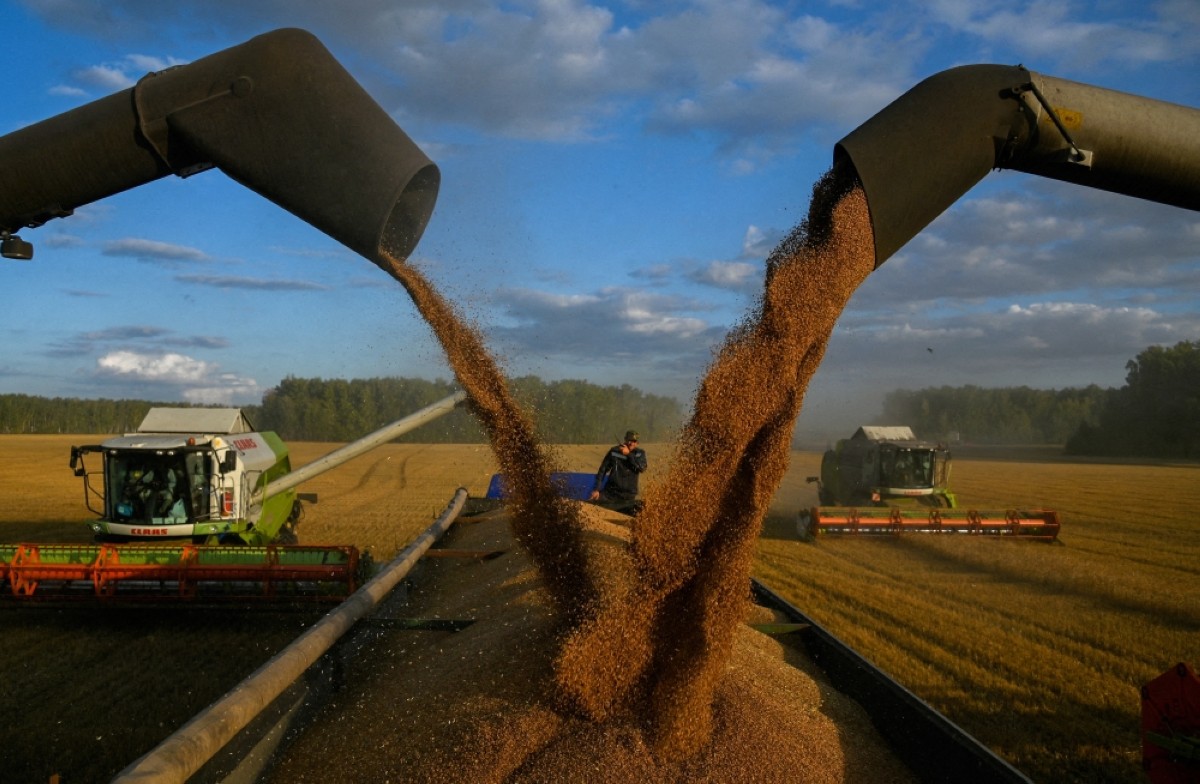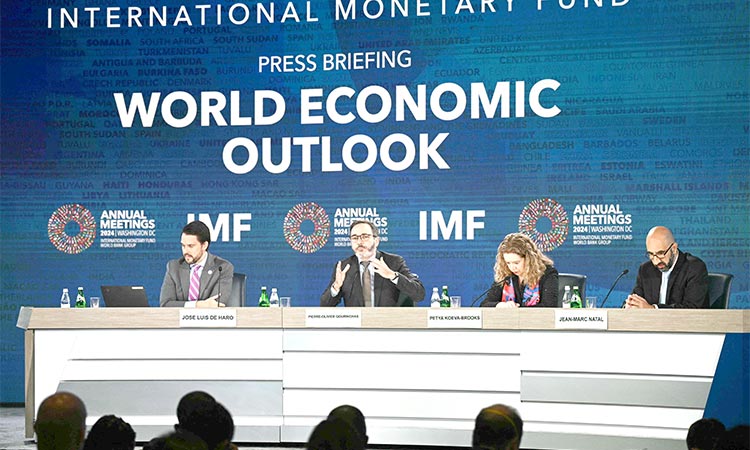Climate change impacts threaten global wheat harvests
RAMBA, India: When all else fails, Satveer Singh knows his family will manage if they have a sack of wheat flour in the kitchen to make rotis. Served hot and stuffed with sliced raw onion, the simple meal of Indian flatbreads keeps hunger at bay.

Combines load wheat into a truck during harvest in a field of a local agricultural enterprise in the Cherlaksky district of the Omsk region, Russia.- Reuters.
For now, the family can just about cover their needs - thanks in part to the ration they receive from a government program that distributes food to 800 million people across India.
“It is not enough, but ... on a bad day when money is tight, this wheat helps,” Singh said, gesturing towards the sack of grains lying in a corner of his ramshackle house in a slum area known as Gheja village outside the capital, New Delhi. Ruminating over when to take the grains to be milled, he said supplies from the government program were not always regular. A year or two ago, the family’s wheat ration was partly replaced by rice - for their taste, a poor replacement.
In 2022, hot weather arrived early in India’s major wheat growing regions, shrivelling crops and leading the government to ban wheat exports and reduce rations of the grain under the food distribution program to protect domestic stocks. A year later, history repeated itself. Even this year’s crop will be 6.25% lower than a government estimate of 112 million metric tons, a leading industry body forecasts, setting the stage for the country to import for the first time in six years.
Climate change impacts - including harsher heat, drought and floods - pose a major emerging threat to food security in India and elsewhere, accelerating diverse efforts to introduce crops that are better able to withstand shifting conditions. In India, the world’s second-biggest wheat producer, scientists in government research institutes and universities are racing to develop and distribute a broad range of climate-resilient wheat varieties that could prove vital to shoring up food security for its 1.4 billion people.
Traditionally, crop breeding programs focused on boosting yield, “but that alone is no longer enough”, said Aditi Mukherji, director for climate change adaptation and mitigation at the Consultative Group on International Agricultural Research (CGIAR), a research partnership on food systems.
“Now, (we) need seeds that can withstand higher temperatures and are drought-resilient, or those that incorporate several climate-resilient features,” she said. For farmers like Sukha Singh, who grows wheat on a 20-acre (eight-hectare) plot in the village of Ramba in northern Haryana state, supplies of new, hardier seeds could not arrive quickly enough after hefty climate-related losses in recent years.
Sukha Singh lost more than 30 percent of his wheat crop due to the heatwave that swept into northern India’s wheat belt in Haryana and neighboring Punjab state in March 2022, before the normal hot season between April and June. “Wheat is my main crop, any shock in the harvest puts a strain on my income that takes me at least two years to recover from,” he told the Thomson Reuters Foundation on his farm, where this year’s crops were nearing harvest.
Studies have shown how temperature increases linked to climate change could reduce global wheat yields by up to 30 percent by mid-century, potentially slashing exports from major producers such as India and driving up global food prices.
In India, yields could fall by more than 8 percent by 2035 due to higher maximum temperatures and reduced rainfall, according to a government assessment. The decline could top 20 percent by the end of the century. Following harvest losses over the last two years, more and more farmers in Haryana and Punjab are demanding and sowing climate-resilient varieties.
They are not always easy to find at local seed dealers, but Sukha Singh said he had been lucky.
“Fortunately ... there was one that had just reached the dealer,” he said. Developed by the Indian Institute of Wheat and Barley Research (IIWBR), a government-run research entity, the new variety has shown greater resilience against temperature fluctuations and untimely rains, and also came with the promise of increasing yields. In 2023, as other farmers in Haryana counted their climate-related harvest losses for a second consecutive year, Sukha Singh’s wheat crop had a healthy yield of 25 quintals (2.5 tons) per acre - in line with his long-term average.
More than 70 climate-resilient wheat varieties are being developed or are already on the market in India, catering to the vast country’s diverse range of weather and soil conditions. “These varieties save wheat crops against heat, drought, waterlogging and prevalent diseases,” said IIWBR Director Gyanendra Pratap Singh. Most were developed by cross-breeding indigenous seed genetics, while 20% used genetic materials supplied by international organizations such as the Mexico-based International Maize and Wheat Improvement Center, a leading global grains research institute. But as climate change alters weather patterns around the world, developing new varieties quickly enough to respond and adapt is challenging, scientists say. — Reuters.











